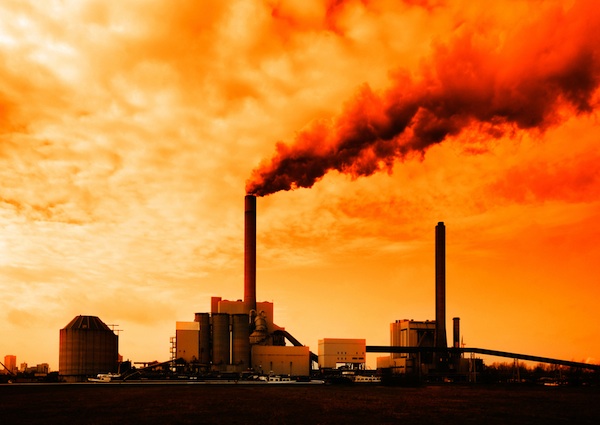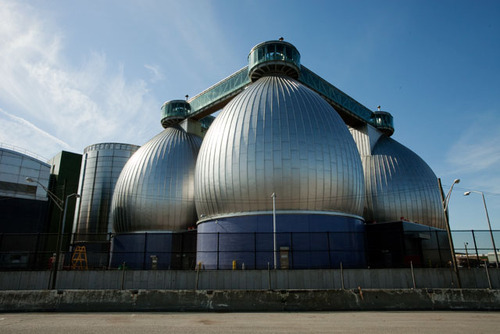Better Late Than Never
New York State's budget, finally passed in early August. It includes new desperately-needed statewide funding for day care for poor working families, adding $162 million dollars to the $460 million child care budget. This should translate into about 50,000 new day care slots across the state. Supply may not meet demand in NYC, though, where 40,000 children are already on the waiting list for subsidized day care. The City's low-cost day care program currently accommodates 66,000 kids. Advocates expect the waiting list to balloon as deadlines for ending parents' welfare benefits approach.
Farber Sounds Off:
Watch out in the coming months for the early effects of the new federal Adoption and Safe Families Act. The law reflects the good intentions of US legislators but it may wreak havoc with NYC families caught up in the child welfare system. The law requires states to terminate parental rights of those parents whose children have been in foster care longer than 15 months. Roughly 40,000 children are in foster care in NYC. On average they stay for over four years, in part because Family Court is so overwhelmed it can't move any faster. Turning these kids into orphans is a risky public policy.
Peggy J. Farber is freelance journalist specializing in children's issues. Her reporting on conditions of NYC children has appeared in City Limits Magazine as well as on National Public Radio.
Environmentalists See Mixed Bag in Cuomo Budget

Gov. Andrew Cuomo draws a clear connection between extreme weather events like Superstorm Sandy and climate change. And he argues that the challenges posed to New York State by climate change will only grow.
But the governor’s proposed budget this year reveals an uneven focus: major investments in areas like energy efficiency and solar power are coupled with what advocates say is woefully inadequate support for core environmental programs that are on the front-line of the state’s response to climate change.
“It’s great to see that he’s [Cuomo] making that connection [to climate change],” said Dan Hendrick, vice-president for external affairs at the New York League of Conservation Voters. “But…the investments aren’t following. We’re not seeing that broader vision [in terms of] sustainability and resiliency.”
There is virtually uniform agreement among environmentalists that funding for the state Department of Environmental Conservation must be increased. The agency has lost approximately 800 staff members since 2008. Yet the governor’s proposed $1 billion DEC budget includes funding for only one new staff person.
The agency’s mission is fundamentally tied to slowing down the forces contributing to climate change.
“DEC needs to be a central part of the state’s climate change strategy and planning,” said Richard Schrader, the state legislative director for the Natural Resources Defense Council. Despite its limited resources, the agency is doing “a very good job in its clean air and overall climate analysis.”
The DEC’s Office of Climate Change is “aggressively” working on policies that will lower the state’s carbon emissions and New York State participates in the multi-state Regional Greenhouse Gas Initiative, a carbon-trading program, noted DEC Commissioner Joseph Martens during a January legislative hearing on the budget.
The agency monitors and enforces state and federal air quality standards – a responsibility that includes regulating the level of carbon dioxide, the main greenhouse gas, generated by new power plants.
Furthermore, the DEC is one of the state’s first responders to the impacts of climate change. The agency tracks the condition of the state’s coastal and inland water bodies, and its forests, which are slowly being altered by the increased carbon levels in the atmosphere. The DEC is also spearheading efforts to cope with the entry of invasive species into the state, which has been exacerbated by climate change.
“It is a vitally important agency,” said Katherine Nadeau, policy director at Environmental Advocates, an Albany-based watchdog group. “[But], they’re dying by a thousand cuts.”
Re-investing in DEC staff is necessary, argued Laura Haight, a senior environmental associate with the New York Public Interest Group, “to protect New Yorkers and respond to...ever-increasing natural and manmade disasters.”
The agency is down to 2,700 full-time employees throughout the state, about 77 percent of the workforce employed by the DEC before the recession began in 2007.
“These are very substantial reductions,” said state Assemblyman Brian Kavanagh, D.-Manhattan. “Oversight has diminished…I believe there is less enforcement activity [of environmental regulations].”
The agency’s ability to do its job – from monitoring and reducing air pollution to inspecting sewage treatment plants to plugging abandoned gas wells – has been questioned repeatedly by environmental groups and state legislators during the past few years.
And in the context of a changing climate, these functions take on added weight. The agency notes, for example, that air pollution not only harms human health, but also can “damage all the elements of the ecosystem.”
Kavanagh and Environmental Advocates stress that they believe DEC employees have made an enormous effort to continue the agency’s mandate, but Kavanagh adds, “something has to give…they’re trying to act efficiently [but] important objectives suffer.”
An analysis of state data reported in September by Environmental Advocates found that New York’s “formal enforcement” of provisions related to the federal Clean Air, Clean Water and Resource Conservation and Recovery Acts had “decreased by nearly 25 percent between 2009 and 2012.” The study also found that inspections of polluting facilities overall dropped by 35 percent during the same period.
The DEC assailed the report, saying it “distorts key facts, omits others, and outright ignores this administration’s strong environmental record.”
Katherine Nadeau of Environmental Advocates told the Gotham Gazette that “we are 100 percent solid in our data – it’s all public.”
The DEC has taken steps to manage enforcement in new ways with less manpower, including the establishment of a program that allows environmental offenders to avoid penalties if they self-report violations.
Kavanagh, who leads the newly formed New York State Caucus of Environmental Legislators, said there is significant interest in getting more resources to the DEC.
“We are early in the budget process. This is going to be an ongoing conversation,” he said. “We know there are people on the other side of this who would prefer less [environmental] enforcement.”
A fight is also being waged over the “modest” increase proposed by the governor to the state’s Environmental Protection Fund. The EPF is supported by the Real Estate Transfer Tax and underwrites a wide array of environmental and sustainability projects throughout the state.
The $4 million included in this year’s budget would bring the EPF to $157 million.
A coalition of more than 100 environmental organizations have asked the state legislature to increase the EPF to $200 million, and maintain the EPF’s current share of proceeds from the Real Estate Transfer Tax.
“Additional funding will position New York to address the critical issues,” the groups said in a Feb. 6 letter to lawmakers, “empowering our municipalities to become more resilient and reduce risk from storm impacts.”
Assemblyman Robert Sweeney, a Long Island Democrat who chairs that body’s Environmental Conservation committee, said the legislature is looking closely at ideas for revenue, including a surcharge on plastic water bottles, which would “support a stronger EPF.” He said that it was a “tougher sell to single out one agency” – the DEC – for increased funding even though the agency has suffered arguably disproportionate staffing cuts.
A sense of urgency about EPF funding crosses party lines.
“We need to get that [EPF] figure way above,” said state Senate Environmental Conservation committee chair, Mark Grisanti, R.-Buffalo. “I’m shooting for $200 million.”
Photo credit: U.S. Environmental Protection Agency.
The Zero Waste Future is Now, and it’s in Brooklyn

New York City has entered a new frontier of sustainability by turning food and human waste into energy that will heat our homes and businesses.
And it is all going to happen in eight enormous space-age eggs in Brooklyn.
The city announced Friday that it has partnered with Waste Management, Inc., and National Grid to harness the methane that is generated at its Newtown Creek Wastewater Treatment Plant and convert it into “pipeline ready” fuel. The three-year pilot project has the potential to reduce New York City’s carbon emissions by more than 90,000 metric tons annually, comparable to taking 19,000 cars off the road, city officials said.
Making Gas
At a tour of the facility with the city and its private sector partners last week, Newtown Creek plant manager Jim Pynn explained that bio-gas, which is mainly methane, is a standard by-product of the wastewater treatment process. How is bio-gas generated? By cooking the waste, essentially.
At the Newtown Creek plant in North Brooklyn, the city’s largest wastewater treatment facility, human and other types of organic waste undergo a series of processes which produce a sludge.
The sludge is then heated to at least 95 degrees Fahrenheit for 15 to 20 days in the plant’s immediately recognizable “digester eggs." The heating of the sludge generates the growth of anaerobic bacteria, which consume much of the organic material. That “digestion” process produces water, carbon dioxide and bio-gas.




